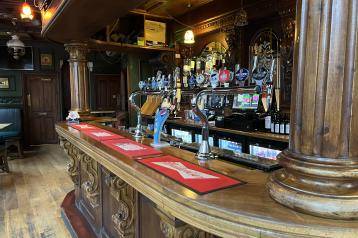
George Krivosic, owner of Hammersmith-based Hotel Adria
A Hammersmith business has been transformed into a highly energy-efficient hotel. Owner George Krivosic, 64, tells us why he invested in energy efficiency and how it's affected his bills.
"Retrofitting can seem dauting, but it's absolutely worth the effort, both in terms of savings as well as in guest satisfaction," George said.
Retrofitting Hotel Adria
George embarked on his retrofit journey of Hotel Adria, Glenthorne Road, after the building had been partly burnt out by a fire and was in a bad state of disrepair.
To keep the hotel's energy usage in check, George went on to implement a wide range of retrofit measures:
Insulation
The building has been retrofitted with insulation, including plasterboard insulation on the exterior north-facing wall and rockwool floor insulation.
Electricity and heating
Most rooms are connected to a smart key, ensuring that heating and electricity will only turn on when a guest spends time in their room.
As soon as they leave, the electricity and the heating will cut off within one minute, helping to reduce energy usage by up to 30 per cent.
The LED lights in the bathroom are motion-activated to help further cut down on wasted energy.
Water

The toilet flush rate has been reduced to 7 litres. That's two-and-a-half times less than the 18 litres a regular toilet uses per flush. The cistern has been raised to maintain a strong flush intensity despite the reduced amount of water.
Heating control
George makes sure to keep his boiler running at optimal efficiency by:
- operating it at a maximum of 70 degrees Celsius
- insulating the piping
- flushing the radiator system regularly and
- using an industrial magnetic filter system to help remove any iron magnetic scale build-up.
Result
In addition to the cut in carbon emissions, the measures have led to a steady decrease in utility costs, allowing Hotel Adria to better weather the recent rise in energy prices. "It's helped cut my energy usage in half and my energy bills by 35 per cent!" George reports.
Energy efficiency schemes
Changing the way we construct, heat and power our buildings is key to H&F's drive to net zero by 2030.
Approximately 75 per cent of carbon emissions across our borough come from:
- heating buildings (particularly through gas boilers)
- powering buildings (through electricity made by burning fossil fuels)
- poorly insulated and leaky buildings, which require more energy to heat and power.
Retrofit measures can help businesses improve their energy efficiency, save money on their energy bills and reduce their carbon footprint.
"You don't need to be an energy expert to do your bit," said George. "If anything, it's a great learning experience and most importantly, it can help you save money in the long run!"
Support for businesses
Visit our energy efficiency webpage for advice on how to improve your organisation's energy and climate performance.
Get in touch with our climate team at climate-emergency@lbhf.gov.uk for tailored advice and support.
Or join the H&F Climate Alliance to access a programme of support such as free energy audit surveys and recommendations.
Want to read more news stories like this? Subscribe to Climate Connects.




